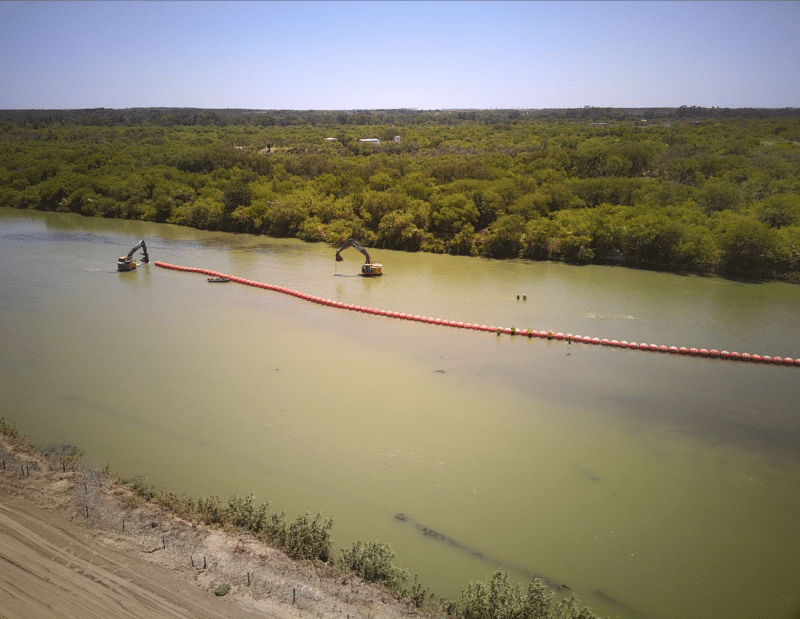A federal judge was set to hear arguments Tuesday over whether a buoy barrier erected by Gov. Greg Abbott (R-TX) can remain in place.
Judge David A. Ezra of the U.S. District Court for the Western District of Texas, is presiding over the hearing after the Department of Justice filed a lawsuit last month after the barrier was erected in the Rio Grande River to prevent migrants from illegal border crossings.
The lawsuit followed the revelation of an email shared with the media by the Texas Department of Public Safety (DPS), in which a state trooper accused the agency of authorizing inhumane treatment of migrants attempting to cross the Texas-Mexico border.
Numerous migrants have been injured by the barriers as well as on razor wire Abbott ordered placed in the riverbank as part of his Operation Lone Star, a series of border security measures announced in 2021 that included sending state troopers and National Guard members to the Texas-Mexico border to deter or arrest migrants attempting to cross the Rio Grande.
Close-up video posted by Rep. Sylvia Garcia (D-TX) this month further shows that the Rio Grande barrier also includes circular saw blades.
In early August, Mexican officials said they found two bodies floating in the Rio Grande, including one along the barrier—though Texas DPS pushed back, asserting that the migrant had died elsewhere and floated toward the barrier.
Ahead of filing suit, the DOJ sent Abbott a warning to remove the barrier or face civil action. In a letter to the governor, the DOJ wrote, “The State of Texas’s actions violate federal law, raise humanitarian concerns, present serious risks to public safety and the environment, and may interfere with the federal government’s ability to carry out its official duties.”
Abbott pushed back, writing in a letter to President Biden, “Texas will fully utilize its constitutional authority to deal with the crisis you have caused,” to which he added, “Texas will see you in court, Mr. President.”
The DOJ is basing its lawsuit on federal law called the Rivers and Harbors Act, which “prohibits the creation of any obstruction to the navigable capacity of waters of the United States, and further prohibits building any structure in such waters without authorization from the United States Army Corps of Engineers.”
Tuesday’s hearing is likely to focus on how the court should interpret a key term in the law—over whether the structure was built on water that’s “navigable.”
Texas argues that the law does not apply because the section of the Rio Grande where the barrier was installed is not “navigable.” And even if the court were to find those waters are navigable, Texas asserts that the barrier does not obstruct nor does it count as a banned “structure” under the law.
According to the DOJ, Texas did not seek approval from the Army Corps of Engineers before installing the floating barrier, preventing the federal government from pre-checking it for environmental or safety hazards.


